|
Books Should Be Free Loyal Books Free Public Domain Audiobooks & eBook Downloads |
|
|
Books Should Be Free Loyal Books Free Public Domain Audiobooks & eBook Downloads |
|
Literature |
|---|
|
Book type:
Sort by:
View by:
|
By: Edna Ferber (1885-1968) | |
|---|---|
 One Basket
One Basket
This sparkling collection of 7 short stories by Ferber including some that are considered her all time best like The Woman Who Tried To be Good and The Maternal Feminine. Writing for and about women, Edna Ferber touches the very heart and soul of what it means to be human; to make good choices and bad; to be weak and strong. This was a very popular book when published in 1913 | |
By: Harriet Beecher Stowe (1811-1896) | |
|---|---|
 The Pearl of Orr's Island
The Pearl of Orr's Island
Go on a journey to the coast of Maine and immerse yourself in the picturesque community on Orr’s Island. See the raindrops glistening on the pine needles and hear the waves crashing on the rocks. This is a tale of romance, tragedy, crusty sea captains, an impetuous boy, a loving girl, complete with village gossips and twists in the plot. | |
By: William Dean Howells (1837-1920) | |
|---|---|
 The Rise of Silas Lapham
The Rise of Silas Lapham
The Rise of Silas Lapham is the most widely read of W.D. Howells’ novels. An example of literary realism, the story is about a farmer (Silas Lapham) who launches a very successful paint business, and moves his family up the social ladder of Boston. Lapham, however, is not one of the new types of American businessman, the ruthless plutocrat, rather he is the old-fashioned trustworthy Yankee trader, and the story deals with how he fares in the industrial capitalist environment. It is also a novel of manners, telling the story of the courtship of a daughter, and the difficulties the family deals with in attempting to move from one social class to another. | |
By: Neil Munro (1863-1930) | |
|---|---|
 Doom Castle
Doom Castle
Doom Castle is the story of young Count Victor's journey to Scotland after the Jacobite Rebellion, searching for a traitor to the Jacobite cause as well as a mysterious man under the name of "Drimdarroch", whom he swore revenge. After a perilious journey, Count Victor arrives at Doom Castle as a guest of the enigmatic Baron of Doom, his two strange servitors and his beautiful daughter... (Summary by Carolin) | |
By: Elizabeth Gaskell (1810-1865) | |
|---|---|
 Round the Sofa
Round the Sofa
Round the Sofa (1859), is a book of stories by the lady that Charles Dickens called his “dear Scheherazade” due to her skill as a story teller. That Lady was Mrs. Elizabeth Gaskell (North and South, Wives and Daughters, Cranford etc.). Mrs. Gaskell begins with Round the Sofa, a short story which she uses as a device to stitch together six previously published stories into a single work. It introduces us to a set of characters who take turns to recount stories to one another during their weekly soirée... | |
By: H. G. Wells (1866-1946) | |
|---|---|
 The Secret Places of the Heart
The Secret Places of the Heart
Richard Hardy, a member of the British gentry, tries to resolve problems in his marriage as he travels with a psychiatrist. The book is to a great extent autobiographical. H. G. had read some brilliantly composed articles by a writer who wrote under the name Rebecca West. In one piece she called H. G. "pseudo-scientific." He contacted her and asked what she meant. When they met for lunch, it was the beginning of a very intense and volatile relationship. Soon she was pregnant, so he divided his time between her and his wife Jane with their two sons... | |
By: Myrtle Reed | |
|---|---|
 At The Sign of The Jack O'Lantern
At The Sign of The Jack O'Lantern
This begins with an odd inheritance at the end of a honeymoon, both parties being inexperienced. Then someone comes to visit, then another, until we've got a chaotic bedlam of New England's tragically off the wall odd-ball relations. Our protagonists may not communicate efficiently at first but at least they've got a sense of humours. The humourous style keeps up as well as some moments of lustre and rich feeling about the printed word itself. (Introduction by D. Wor) | |
By: Harold Bell Wright (1872-1944) | |
|---|---|
 Their Yesterdays
Their Yesterdays
The story of a man and a woman, as they experience The Thirteen Truly Great Things of Life: Dreams, Occupation, Knowledge, Ignorance, Religion, Tradition, Temptation, Life, Death, Failure, Success, Love, and Memories.(Introduction by Megan Kunkel) | |
By: Henry James (1843-1916) | |
|---|---|
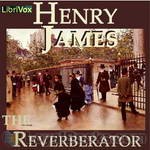 The Reverberator
The Reverberator
Another Jamesian look at Americans in Paris. What happens when a reporter for an American scandal sheet (The Reverberator) is looking for a good story, though one which might interfere with the marriage plans of a young American woman in the City of Light? This book has been described as "a delicious Parisian bonbon," and its generally good humor stands in contrast with some of the writer's other work. | |
By: Jacob A. Riis (1849-1914) | |
|---|---|
 Neighbors – Life Stories of the Other Half
Neighbors – Life Stories of the Other Half
These stories have come to me from many sources—some from my own experience, others from settlement workers, still others from the records of organized charity, that are never dry, as some think, but alive with vital human interest and with the faithful striving to help the brother so that it counts. They have this in common, that they are true. For good reasons, names and places are changed, but they all happened as told here. I could not have invented them had I tried; I should not have tried if I could... | |
By: Thomas Hardy (1840-1928) | |
|---|---|
 The Well-Beloved
The Well-Beloved
'The Well-Beloved' tells the story of Jocelyn Pierston and his love for three generations of women - the grandmother, her daughter and grand-daughter over a period of forty years. Pierston is seeking for perfection in his choice of lover and in doing so lets opportunities for happiness pass him by. However, at the end of his life, he finds some kind of contentment in compromise. | |
 The Hand of Ethelberta
The Hand of Ethelberta
Ethelberta was raised in humble circumstances but became a governess and consequently, at the age of 18, married well. However, her husband died two weeks after the wedding. Her father-in-law, Lord Petherwin, died shortly afterwards. Ethelberta (now 21) lives with her mother-in-law, Lady Petherwin. In the three years that have elapsed since her marriage, Ethelberta has been treated to foreign travel and further privileges by Lady Petherwin but restricted from seeing her own family. The story follows Ethelberta's career as a famous poetess and storyteller... | |
By: Cornelia Meigs (1884-1973) | |
|---|---|
 The Windy Hill
The Windy Hill
When two children come to stay with their cousin, they immediately realize something is wrong, but no one will tell them what. Their cousin is strangely altered: nervous, preoccupied, hardly aware of their existence. They soon discover that a conflict is brewing among the hills and farms of the Medford Valley, one whose origins reach back over a century. They must piece it together from scattered clues, and from the stories told to them by a mysterious bee keeper and his daughter. This 1922 Newbery Honor Book tells of the traits that run in a family—honor, stubborn pride, and a dark lust for wealth—and how they shape the destinies of three generations. (Introduction by Peter Eastman) | |
By: A. A. Milne (1882-1956) | |
|---|---|
 Once a Week
Once a Week
A collection of short stories by famed Winnie the Pooh author, A.A. Milne. This charmingly humorous work from Milne's earlier writing period was first published in Punch magazine. | |
By: Harl Vincent (1893-1968) | |
|---|---|
 Astounding Stories 02, February 1930
Astounding Stories 02, February 1930
This is the second issue of the classic science fiction Astounding Magazine. It contains the finale of The Beetle Horde by Victor Rousseau, as well as stories by Harl Vincent, Charles Willard Diffin, Hugh B. Cave, Sophie Wenzel Ellis, Sterner St. Paul, Anthony Pelcher and Captain S. P. Meek. | |
By: Henrik Ibsen (1828-1906) | |
|---|---|
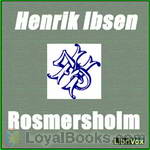 Rosmersholm
Rosmersholm
Rosmersholm is a play written in 1886 by Norwegian playwright Henrik Ibsen. In the estimation of many critics the piece is Ibsen’s masterwork, only equalled by The Wild Duck of 1884. As expressed by the protagonist, Rosmer, the theme of the play is social and political change, in which the traditional ruling classes relinquish their right to impose their ideals on the rest of society, but the action is entirely personal, resting on the conduct of the immoral, or amoral, “free thinking” heroine, Rebecca, who sets herself to undermine Rosmer’s religious and political beliefs because of his influential position in the community... | |
By: Booth Tarkington (1869-1946) | |
|---|---|
 Monsieur Beaucaire
Monsieur Beaucaire
A madcap Frenchman posing as an ambassador's barber blackmails a dishonest duke to introduce him as a nobleman to a wealthy belle of Bath. Since the duke himself hopes to mend his fortunes by wedding this very woman, he attempts to murder Beaucaire, and failing that to discredit him. To test the lady's mettle, Beaucaire allows his deception to be exposed--up to a point--and there we must draw the curtain to preserve the surprise ending. ( | |
By: Vernon Lee (1856-1935) | |
|---|---|
 A Phantom Lover
A Phantom Lover
A Phantom Lover is a supernatural novella by Vernon Lee (pseudonym of Violet Paget) first published in 1886. Set in a Kentish manor house, the story concerns a portrait painter commissioned by a squire, William Oke, to produce portraits of him and his wife, the eccentric Mrs. Alice Oke, who bears a striking resemblance to a woman in a mysterious, seventeenth century painting. | |
By: George Moore (1852-1933) | |
|---|---|
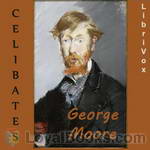 Celibates
Celibates
The author is considered the first great Irish writer of realist fiction and is said to have been an inspiration for James Joyce. Celibates is a novel of three characters: Mildred Lawson, John Norton and Agnes Lahens.They have nothing in common other than an absolute love of themselves and an inability to sympathize with others. In that vein, it constitutes a striking image of our own modern day self-absorbed society. (Introduction by James Carson) | |
By: Thomas Love Peacock (1785-1866) | |
|---|---|
 Headlong Hall
Headlong Hall
Headlong Hall is the first novel by Thomas Love Peacock, published in 1815 (dated 1816). As in his later novel Crotchet Castle, Peacock assembles a group of eccentrics, each with a single monomaniacal obsession, and derives humor and social satire from their various interactions and conversations. The setting is the country estate of Squire Harry Headlong Ap-Rhaiader, Esq. in Wales. | |
By: Arthur Machen (1863-1947) | |
|---|---|
 The Angels of Mons
The Angels of Mons
The Angels of Mons is a popular legend about a group of angels who supposedly protected members of the British army in the Battle of Mons at the outset of World War I. The story is fictitious, developed through a combination of a patriotic short story by Arthur Machen, rumours, mass hysteria and urban legend, claimed visions after the battle and also possibly deliberately seeded propaganda. | |
By: Cal Stewart (1856-1919) | |
|---|---|
 Uncle Josh's Punkin Centre Stories
Uncle Josh's Punkin Centre Stories
A collection of comedic short stories from the perspective of an old country man. | |
By: George Horace Lorimer (1869-1937) | |
|---|---|
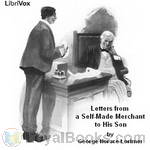 Letters from a Self-Made Merchant to His Son
Letters from a Self-Made Merchant to His Son
Being the Letters written by John Graham, Head of the House of Graham & Company, Pork-Packers in Chicago, familiarly known on 'Change as "Old Gorgon Graham," to his Son, Pierrepont, facetiously known to his intimates as "Piggy." George Horace Lorimer was an American journalist and author. He is best known as the editor of The Saturday Evening Post. | |
By: Francis William Bourdillon (1844-1912) | |
|---|---|
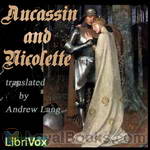 Aucassin and Nicolette.
Aucassin and Nicolette.
Aucassin and Nicolette is a medieval romance written in a combination of prose and verse called a “song-story.” Created probably in the early 13th century by an unknown French author, the work deals with the love between the son of a count and a Saracen slave girl who has been converted to Christianity and adopted by a viscount. Since Aucassin’s father is strongly opposed to their marriage, the two lovers must endure imprisonment, flight, separation in foreign lands, and many other ordeals before their ardent love and fierce determination finally bring them back together... | |
By: Moliere (1622-1673) | |
|---|---|
 The Imaginary Invalid
The Imaginary Invalid
The Imaginary Invalid is a three-act comédie-ballet by the French playwright Molière. It was first performed in 1673 and was the last work he wrote. The plot centers around Argan, the 'imaginary invalid' who is completely dependent on his doctors and wants to marry his daughter to a doctor against her will, so that he will always have medical care freely available to him. In an ironic twist of fate, Molière collapsed during his fourth performance as Argan on 17 February and died soon after. | |
By: Molière (1622-1673) | |
|---|---|
 Miser
Miser
The Miser is a comedy of manners about a rich moneylender named Harpagon. His feisty children long to escape from his penny-pinching household and marry their respective lovers. Although the 17th-century French upper classes presumably objected to the play's message, it is less savage and somewhat less realistic than Molière's earlier play, Tartuffe, which attracted a storm of criticism on its first performance. | |
By: Stephen Leacock (1869-1944) | |
|---|---|
 My Discovery of England
My Discovery of England
"In the course of time a very considerable public feeling was aroused in the United States and Canada over this state of affairs. The lack of reciprocity in it seemed unfair. It was felt (or at least I felt) that the time had come when some one ought to go over and take some impressions off England. The choice of such a person (my choice) fell upon myself. By an arrangement with the Geographical Society of America, acting in conjunction with the Royal Geographical Society of England (to both of whom I communicated my proposal), I went at my own expense."And from thence follow the impressions of Canadian political economist and humourist, Stephen Leacock, after a lecturing visit to England. | |
By: J. M. Barrie (1860-1937) | |
|---|---|
 Peter and Wendy
Peter and Wendy
Peter and Wendy tells the classic story of Peter Pan, a mischievous little boy who can fly, and his adventures on the island of Neverland with Wendy and her brothers, the fairy Tinker Bell, the Lost Boys, the Indian princess Tiger Lily, and the pirate Captain Hook. (Introduction modified from Wikipedia) | |
By: Alexander Pushkin (1799-1837) | |
|---|---|
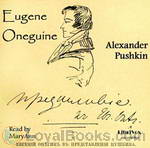 Eugene Onéguine
Eugene Onéguine
Eugene Onéguine is a classic of Russian literature, and its eponymous protagonist has served as the model for a number of Russian literary heroes (so-called superfluous men). It was published in serial form between 1825 and 1832. The first complete edition was published in 1833, and the currently accepted version is based on the 1837 publication.Almost the entire work is made up of 389 stanzas of iambic tetrameter with the unusual rhyme scheme "AbAbCCddEffEgg", where the uppercase letters represent feminine rhymes while the lowercase letters represent masculine rhymes... | |
By: Lord George Gordon Byron (1788-1824) | |
|---|---|
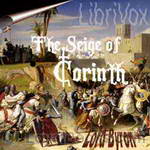 The Siege of Corinth
The Siege of Corinth
In this moving poem, Byron recounts the final, desperate resistance of the Venetians on the day the Ottoman army stormed Acrocorinth: revealing the closing scenes of the conflict through the eyes of Lanciotto - a Venetian renegade fighting for the Ottomans - and Francesca - the beautiful maiden daughter of the governor of the Venetian garrison: Minotti. | |
By: Various | |
|---|---|
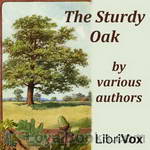 The Sturdy Oak
The Sturdy Oak
At a certain committee meeting held in the spring of 1916, it was agreed that fourteen leading American authors, known to be extremely generous as well as gifted, should be asked to write a composite novel....Third, to have the novel finished and published serially during the autumn Campaign of 1917.The carrying out of these requirements has not been the childish diversion it may have seemed. Splendid team work, however, has made success possible.Every author represented, every worker on the team, has gratuitously contributed his or her services; and every dollar realized by the serial and book publication of "The Sturdy Oak" will be devoted to the Suffrage Cause... | |
By: Henry Peterson (1818-1891) | |
|---|---|
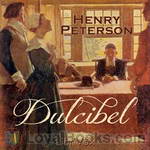 Dulcibel A Tale of Old Salem
Dulcibel A Tale of Old Salem
Dulcibel is a young, pretty and kind-hearted fictional character charged with Witchcraft during the infamous Salem Witch trials. During this time there is a group of "afflicted girls" who accuse Dulcibel and many others of Witchcraft, and during their trials show "undoubtable" proof that these people really are Witches. Will Master Raymond, Dulcibel's lover, be able to to secure Dulcibel's release from jail? Or will Dulcibel's fate be the gallows like so many other accused Witches of her time? | |